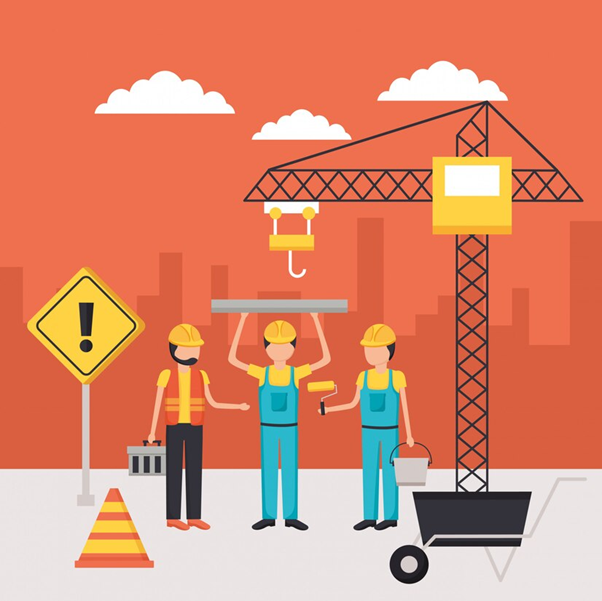
Construction sites can be dangerous places, and one of the significant dangers for employees is injury from inappropriate lifting methods. Lifting equipment is crucial for efficiently operating a construction site in compliance with health and safety regulations.
Construction employees have musculoskeletal disorders (MSDs) annually, which cause lost time, reduced productivity, and increased workers’ compensation costs. Five tips for safe lifting operations on construction sites help businesses decrease the danger of injury and keep their employees safe.
Avoid Heavy Lifts
Inappropriate lifting and material handling can cause injuries to the back, shoulders, knees, and muscles and soft tissue throughout the body.
Use a mechanical lift support if the weight is too much for you alone. When probable, split the load into smaller, securely handled parts. Suppose you are lifting a weighty object with another or numerous employees. Use extreme attention, as the load will not correspondingly be divided throughout the lift. Completely design the lift and communicate visibly throughout the procedure.
Correct Use of Equipment
The construction industry is one of the most dangerous in the world. Given the heights involved in rigging operations, safety training for rigging equipment is vital to prevent injuries for your crew.
The only way you should practice your lifting equipment is with safe rigging. Make sure your team is aware of the significance of surprise loading. When the load is unexpectedly increased, lifted, or decreased, the wire rope will either stress or recoil.
Verify the usage of appropriate equipment and rigging rentals to prevent mishaps. Only use rigging equipment that is accepted for that purpose. Rigging Rental is the best way to avoid accidents.
Secure the Load
One of the major dangers when transferring a load using lifting equipment is that the load can fall. An unsafe load can fall and cause severe injury to people below. It can also cause expensive damage to other equipment on the construction site.
Someone skilled and capable of choosing the correct equipment must protect the load. Various rigging techniques, force, weight distribution, and equipment weight capacity must be considered when attaching the load. The slinger signaler often secures the cargo. If lifting equipment fails, a safety restraint net may also be affixed to limit the load.
Guarantee Proper Positioning and Installation
The position of the lifting equipment and the installations can greatly affect the hazards involved in a lifting operation. Proper attention and safety measures can prevent risks related to equipment proximity to structures like overhead cables, excavations, underground drains, and sewers.
It is important to take all essential actions to prevent people from being knocked out by any load or equipment. The equipment’s location should be such that lifting heavy loads over people can be stopped.
The danger of load drift, i.e., the alternation or rotation of the load, should also be alleviated. It should also be guaranteed that the load doesn’t decrease quickly or isn’t released accidentally at any point.
Moreover, access points should be protected with fortified gates or barriers to prevent personnel from falling into a shaft or hoistway.
Performs Inspection and Maintenance Tasks
Your business must have a safe work scheme for using and maintaining lifting equipment. You may use a safety inspection list to confirm severe features where decline can cause danger. The list can also include barriers for the remaining risks recognized by the constructor in their advice provided with the equipment.
An experienced person must inspect lifting equipment and its fittings before using them for the first time. Later, lifting equipment must be thoroughly checked according to regulations and examination schemes during regular use, repairs, and planned maintenance.
